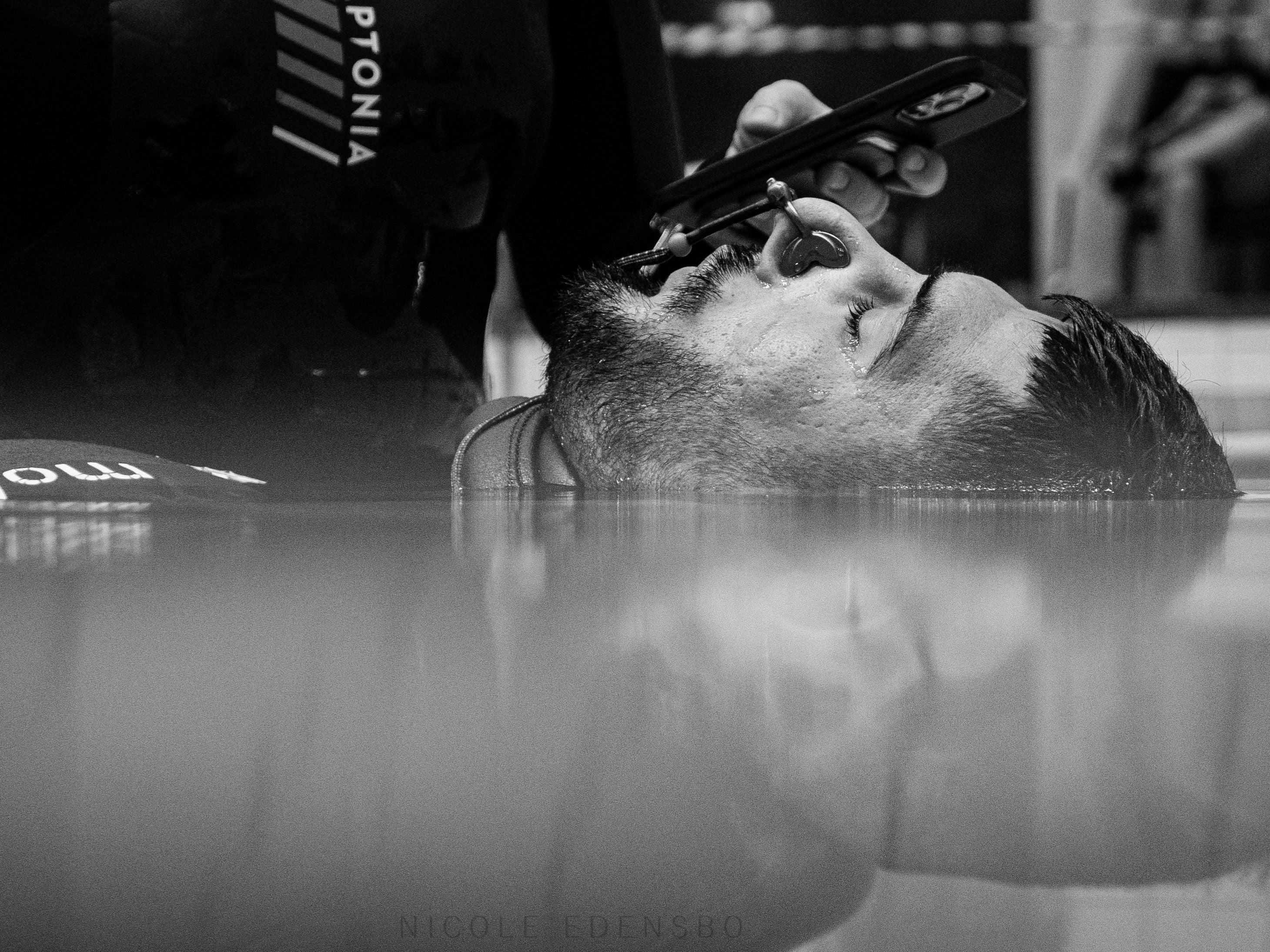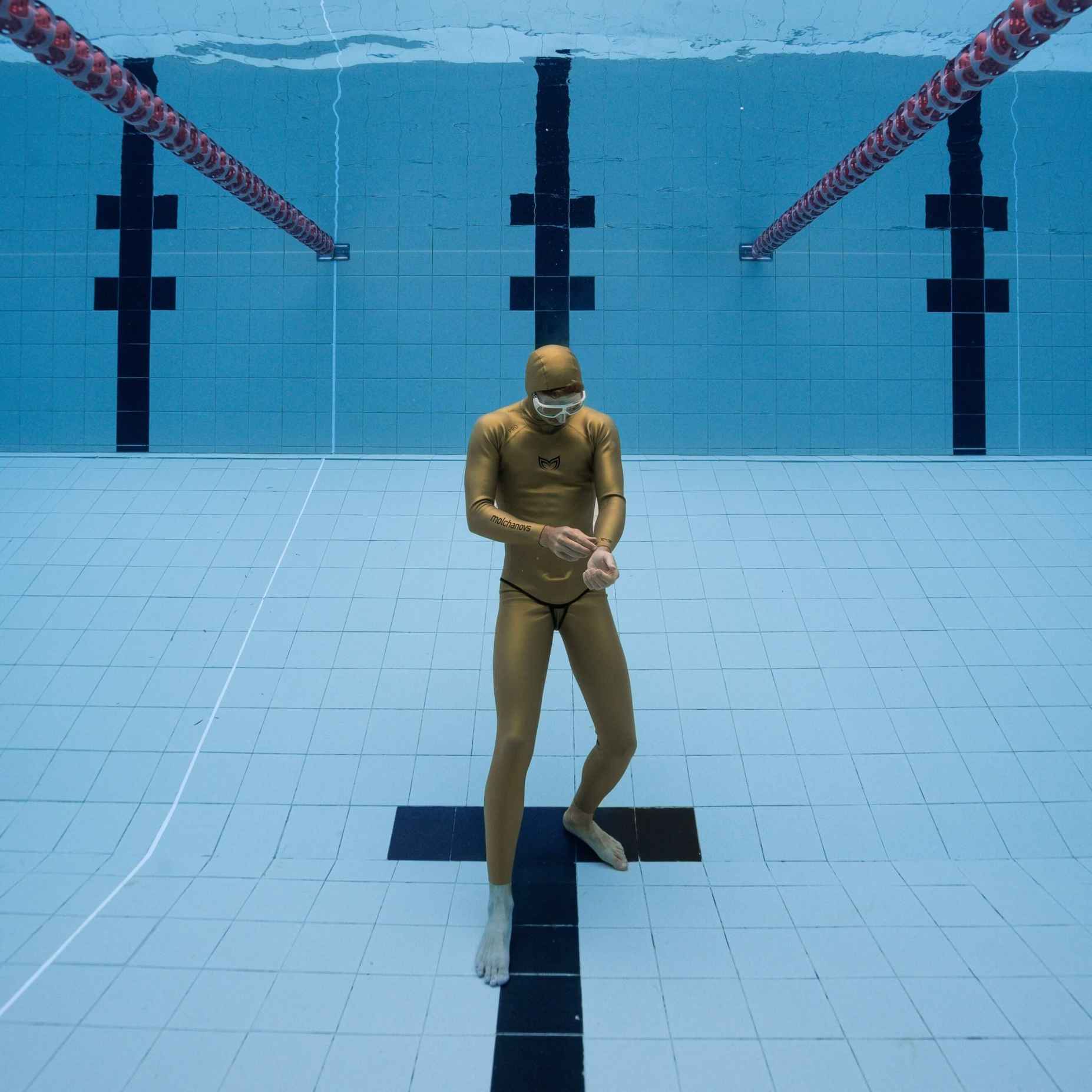How to Make Static Freediving Training Fun with Rami Bladlav

Training STA has excellent benefits for both freedivers and non-freedivers, but it can be challenging to find ways to train STA while keeping it fresh and exciting. This is why Amanda Tran, Molchanovs International Social Media Manager, sat down with Rami Bladlav on Instagram Live to discuss the different aspects of training STA. Rami Bladlav is a Molchanovs athlete and the Nordic National Record Holder in the discipline with an incredible 9 minutes and 17 seconds. Amanda wanted to know exactly why Rami enjoys training STA, what he thinks about while he holds his breath, how he finds time to train with a full-time job and family, and more.
Keep reading below for a simplified summary of the IG Live video or watch the full video here.

Rami Bladlav: I enjoy STA because it’s a place where I can push my limits. It’s simple to train it because you can just go to a pool with a friend and hold your breath. It’s also simple to find friends to train with since freediving is growing here in Sweden, so it’s pretty fun!
AT: Excellent! And how long has this journey been for you to become the Nordic Record Holder?
RB: It has been 3 years since the first day I came in contact with freediving, but I’ve been training it in a very disciplined way for only about 2.5 years.
AT: And before this, you were a professional MMA fighter, correct?
RB: Yes - I did my first professional fight when I was 18 in 2009. I fought for 7 years professionally, and before that, I spent some years as an amateur.
AT: So this was a big shift for you because you were going from being very active and fighting to holding your breath and coming to complete stillness.
RB: Yes, it’s totally different actually because in MMA, before a fight and before you enter the ring or cage, you have some adrenaline, which is good for your performance. You’re more focused, your heart rate goes up, you don’t feel the pain, etc. But in freediving, it’s totally the opposite. You need to calm down to avoid getting that adrenaline, keep your heart rate low, and you feel when contractions start and when you have less oxygen left - you feel everything! In the beginning, it was very hard for me, but now I’ve found it!
AT: I think this is a common struggle for a lot of people because it is difficult to be uncomfortable and can also be challenging to enjoy. How do you recommend to make STA fun, particularly for new freedivers and intermediate divers?
RB: To make STA fun, the most important thing is to do all different kinds of training. For example, if you like running and you go out and run as fast and as long as possible, after 2 or 3 months, it will either get boring or you will injure yourself, and it’s also tough mentally. It’s the same with STA apnea - you can’t just go out every day and hold your breath for as long as you can because it will be very difficult both physically and mentally. Making training fun with your friends and having a plan are very important. You can say, “Today we are going to do CO2 training,” or you can even hold your breath and have someone tell you jokes while you try to relax through it and not laugh.
AT: Really? Wow! And do you personally do these kinds of silly and fun games?
RB: We do it sometimes, yes! But when it’s competition time, we do the most important parts of training - but it’s still important to have fun!
AT: Of course, and you’ve got some big goals ahead by breaking the 10-minute mark, right?
RB: My goal is to make 10 minutes, but it’s very difficult because it’s 40 more seconds than my 9 minute and 17 second performance, but I’ll take it step-by-step. I don’t know if I can reach it, but I think that I can do it, so I’ll just train and see!
AT: We have faith in you, and I certainly believe you can! Talk us through what a maximum STA hold is like for you.
RB: I see STA in different stages. For me, 9 minutes is a long time - if I think there’s 9 minutes left until the bus comes and it’s cold, 9 minutes is really very long! But I have to break it up into different stages when performing STA. The first 4 minutes is very relaxed. I try not to think about when my contractions started, so I tell my coaches beforehand not to tell me the time that’s passed until it’s 5 or 6 minutes. I know my contractions start between 3 and 4 minutes, and sometimes 4 and 5 minutes, so if it starts early, I don’t know and I just keep going.
Stage 2 is when I’m fighting with contractions - I know contractions will come and I’m there trying to deal with them. It's the most difficult time because the panic signals are very fresh, but I know the signals will not get harder until after 7 minutes.
At Stage 3, I have to open my eyes, be focused, and listen clearly to my coach, and if I’m okay, I show signs to my coach. The last part is fighting - I’m going from being very relaxed to trying not to make too much drama in my head. When I'm at 8’30“, I'm trying to hold myself as hard as possible from experiencing an LMC.

RB: Before a STA breath-hold, I have 4 or 5 plans with me, but I don’t choose what to think about. I just let go, but after I feel contractions, I try to remember my plans (a particular visualization or something else). If I feel bad and contractions start very heavy and early, I might think of a different visualization. I start from there, really - I don’t have 100% everything planned, I just have these 5 plans to choose from. I try to think of a story from when I was a kid, or something I dreamed about, or something I just created in my head.
AT: I’ve been told before to go to your happy place - is that similar for you?
RB: Yes, that’s true - sometimes I remember when I walked into the cage for MMA! If everything is very good and contractions are late, I just enjoy it. But most of the time, especxially during competitions, it’s not that easy. In training, my heart rate is lower, but in competitions, it’s a bit harder and I have to fight more.
AT: Someone asked, “As a teacher and a family man, how do you find the time for training with a full-time job and little kids?”
RB: The most important part is planning. I work 8am to 4pm every day and my kids are in school, but after that, we need to plan together. Most of the time, my kids are with me actually! They are in the pool and they have swimming training above or around me when I’m holding my breath! I have to find times like that, when they have swimming training, I train as well, and try to make something out of the hour that I have.
The most important thing is to have a plan with me. If I have 1 hour, I know I can have 2 warm-ups, 1 maximum breath-hold, and 10 minutes for YouTube. If I don’t have a plan, it would take 30 minutes just to decide what I should do.
AT: That’s very disciplined! So how many training sessions do you do a week before a competition?
RB: If I start training 12 weeks before a competition, during the first 4 weeks, the volume is very important. I try to train a lot and also have fun in different training variations.
But when I get closer to competition with 2 months left, I train 4 or 5 times a week in water (3 static sessions and 2 dynamic sessions). I also do dry training every day in the morning - I have 2 empty lung sessions and a full lung maximum session. I don’t like dry training, but in this phase (when it’s 5 to 8 weeks left until competition), I find that the most important part is to get the volume.
When I have 4 weeks left until competition, I try to do a lot more in the water. I actually train less - I only do maximum breath-holds and not so much specific hypoxia training. I try to be below my limit, so if I’m aiming for 9 minutes in competition, in training, I would go for 8 minutes or 8 minutes and 30 seconds maximum. Just tapering like that, and diet of course, but sometimes that changes, too!
AT: Another person asked, “Why did you choose STA over other disciplines?”
RB: I started with dynamic, and in the beginning, I was actually very good at it and liked it a lot! I always liked watching people do STA and thought, “Oh, that’s crazy!” Then I did it with safety and everything in a club and thought, “Okay, that’s real STA, you have official TOP, countdowns, everything!” I finally felt the competition part of it, and when I heard about a competition happening, I signed up and was good at it! So I built goals and chasing goals is fun for me - that’s also my motivation!
AT: One Molchi wanted to know, “Would you consider your approach more as ‘really pushing and torturing yourself’ or ‘training within your limits and focusing on comfort’ kind of approach?”
RB: It’s a mix. In the beginning, I pushed a lot because I came from martial arts, and that mentality is in there - you have to show that you are tough and you train like that. But by the time I realized I really need to meditate and calm down, especially for the first phase at the beginning of the breath-hold (and also before the breath-hold when I have to keep my heart rate low and be relaxed), I just tried to enjoy it without getting nervous. So it’s a mix, but I do have to push at the last part.
If I push too much, though, I'll be overtrained or my central nervous system will be overloaded. I plan my training for my limit. If my limit is at 9 minutes, then I can’t be at 9 minutes every day. Only some days will be maximum breath-holds.
AT: Yes, it’s important to remind people that it’s not just about hitting your max every day, you’ll be overtrained, exhausted, and won’t enjoy it anymore, and that’s the point of freediving - we freedive to have fun!
RB: Yes, it’s impossible to get better by just pushing!
AT: So knowing what you know now, what would you do differently if you decided to begin freediving again?
RB: I wouldn’t change anything! I think I’ve been having fun since I started. I’ve been enjoying my journey, so I wouldn’t change anything, I would say!

AT: Someone wants to know if you use any apps to help you, like for your dry breath-holds in the morning?
RB: I do! I use a static apnea trainer when I do my dry static. What is good about it is that it’s telling me what the time is, how much I have left, and when to start. When I do STA and I am meditating during it, the app tells me to breathe or to hold, and it’s great because I don’t need to look at my watch - I can just focus on relaxing and listening to music. It’s very good to train with!
AT: Do you find that you get contractions earlier during a dry static compared to when you’re in the water?
RB: No, I actually get contractions later when I’m on dry. I can hyperventilate more and I can also do more warm-ups in the dry, which is how I push my contractions. In the water, it’s limited because you can get cold, and if you get cold, you hit hypoxia earlier. Also, I feel that if I do a lot of warm-ups in the water, I get stressed because I feel like it’s too long. But my maximum hold is longer in the water now.
AT: Do you have any tips to deal with contractions?
RB: I would say to not be worried about contractions because they will come anyway! Don’t focus too much on the time that your contractions start, too - it doesn’t matter when they start because sometimes they can begin much earlier than usual and you can still have a good breath-hold. So when the contractions start isn’t always the key part of a breath-hold - of course, it’s more enjoyable to have later contractions, though!
I would say some training without contractions is very important. Hold your breath until the first contraction and then start to breathe, and repeat that 4 to 6 times to get used to training without contractions. But you’ll also need some CO2 training separately to train yourself to deal with contractions.
AT: Thank you for that! And to wrap up, do you have any last tips for our audience?
RB: Static is for everyone! Enjoy it and don’t wait for the best season or best day. Even if you don’t feel so good and you want to train, don’t be worried and don’t care about how long you hold your breath - all training is good for you! Even if your breath-hold is only 60% of your PB, it’s still good volume, so just keep training and find different motivations that get you to train - just do it!
Molchanovs International has recently launched Base Training +, a collection of paid programs from top athletes designed for freedivers with specific training goals. For those freedivers (and non-freedivers) who want to learn how to train STA, Rami’s friend and the number 2 freediver in the world for his 10-minute and 30-second breath-hold, Florian Dagoury, has three programs on BT+ called STA Challenge with Flo. Each program is separated into different goals: 3-minute, 4-minute, and 5-minute breath-hold performances. In a series of videos that feature breath-hold exercises, stretching, and mental techniques, Flo will guide you step-by-step to reaching your future STA personal best performances!
For Base Training members, you can already access Flo’s program through Dashboard under Base Training +.
For Non-Movement Members, you can purchase Flo's STAtic Challenger here.
We want to give a big thank you to Rami for joining us, and are also looking very forward to seeing him and Flo in some friendly competition!




Leave a comment